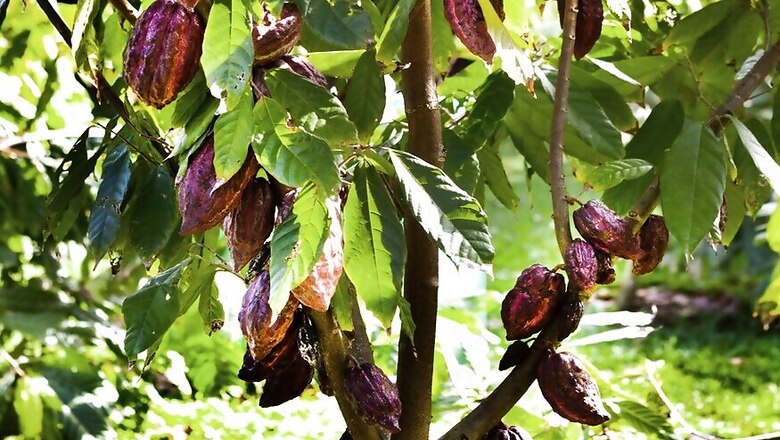
views
The chocolate industry is indirectly driving massive and illegal deforestation in Ivory Coast, fuelling a catastrophic decline in wildlife, a green group said Wednesday.
"In several national parks and other protected areas, 90 percent or more of the land mass has been converted to cocoa," the group Mighty Earth said in its investigation. "Less than four percent of Ivory Coast remains densely forested," it said. "The chocolate companies' laissez-faire approach to sourcing has driven extensive deforestation in Ghana as well."
Habitat loss has been disastrous for protected species, ranging from chimpanzees and leopards to pygmy hippos and elephants, it said. The animals are forced into ever-smaller areas, making it easier for them to be tracked down and slaughtered by poachers. In Ivory Coast, the world's biggest cocoa producer, accounting for 40 percent of world output, "deforestation has pushed chimpanzees into just a few small pockets, and reduced the country's elephant population from several hundred thousand to about 200-400," the report said.
It said major chocolate brands were indirectly involved in a "shocking" trade, in which growers produced cocoa in national parks, who sold it to middle men, who then sold it on to a handful of firms that control roughly half of the world's market. From there, it was sold to big chocolate companies. "According to our analysis, 291,254 acres (117,900 hectares) of protected areas were cleared between 2001 and 2014," Mighty Earth said.
Over the same period, Ghana, another big West African producer, lost 7,000 square kilometers (2,700 square miles) of forest, or about 10 percent of its entire tree cover. Around a quarter of that deforestation in Ghana was connected to the chocolate industry, the report charged. Traders Cargill, Olam and Barry Callebaut, which are named in the report, say on their websites that they are aware of the problem of deforestation in the cocoa sector, and have set up to programs for deforestation-free supply chains.
The world demand for chocolate stands at around three million tonnes annually, a figure that rises between two and five percent each year, in a market worth around $100 billion (84 billion), according to the report.


















Comments
0 comment